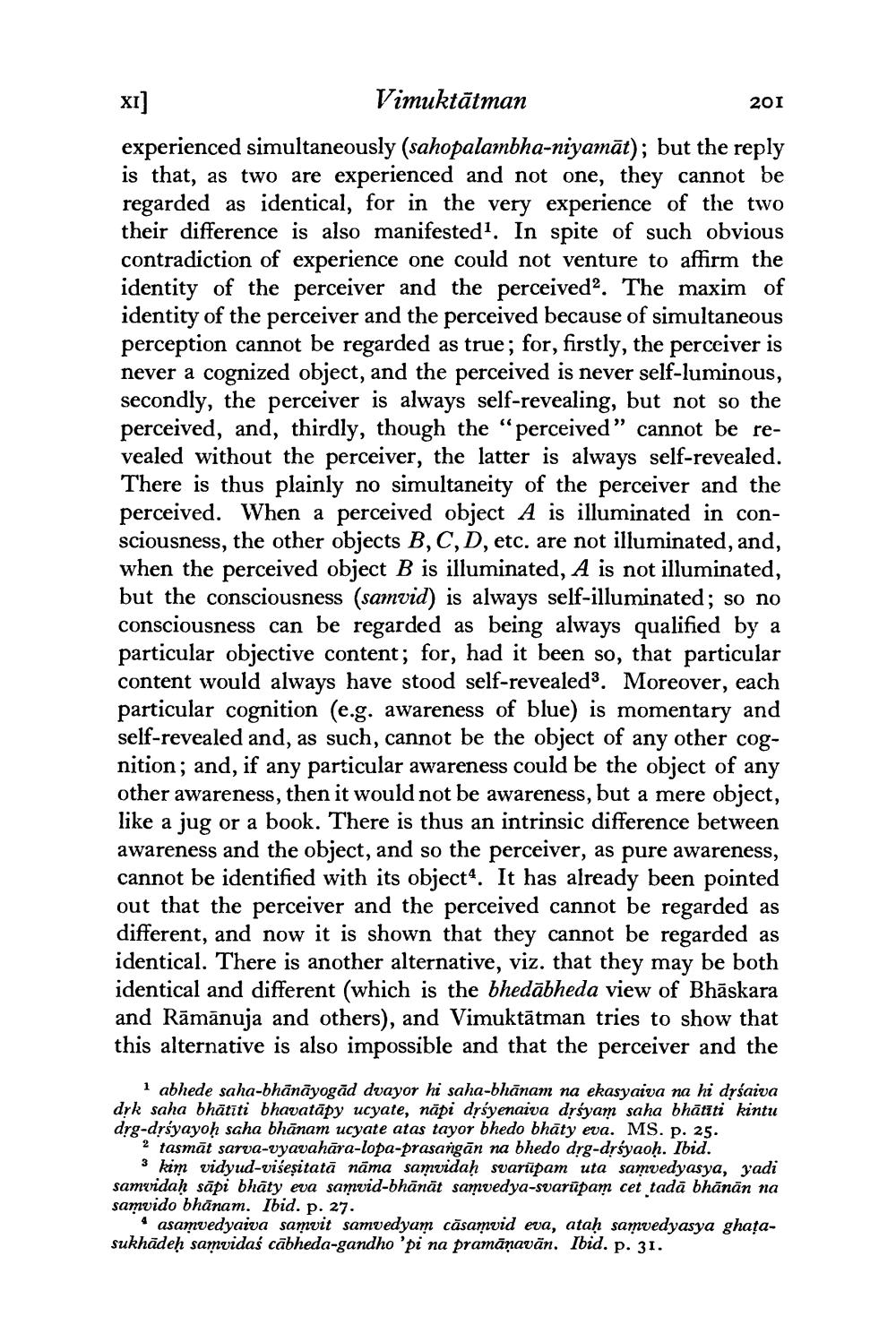________________
Vimuktātman
XI]
experienced simultaneously (sahopalambha-niyamāt); but the reply is that, as two are experienced and not one, they cannot be regarded as identical, for in the very experience of the two their difference is also manifested1. In spite of such obvious contradiction of experience one could not venture to affirm the identity of the perceiver and the perceived2. The maxim of identity of the perceiver and the perceived because of simultaneous perception cannot be regarded as true; for, firstly, the perceiver is never a cognized object, and the perceived is never self-luminous, secondly, the perceiver is always self-revealing, but not so the perceived, and, thirdly, though the "perceived" cannot be revealed without the perceiver, the latter is always self-revealed. There is thus plainly no simultaneity of the perceiver and the perceived. When a perceived object A is illuminated in consciousness, the other objects B, C, D, etc. are not illuminated, and, when the perceived object B is illuminated, A is not illuminated, but the consciousness (samvid) is always self-illuminated; so no consciousness can be regarded as being always qualified by a particular objective content; for, had it been so, that particular content would always have stood self-revealed3. Moreover, each particular cognition (e.g. awareness of blue) is momentary and self-revealed and, as such, cannot be the object of any other cognition; and, if any particular awareness could be the object of any other awareness, then it would not be awareness, but a mere object, like a jug or a book. There is thus an intrinsic difference between awareness and the object, and so the perceiver, as pure awareness, cannot be identified with its object1. It has already been pointed out that the perceiver and the perceived cannot be regarded as different, and now it is shown that they cannot be regarded as identical. There is another alternative, viz. that they may be both identical and different (which is the bhedabheda view of Bhaskara and Rāmānuja and others), and Vimuktātman tries to show that this alternative is also impossible and that the perceiver and the
201
1 abhede saha-bhānāyogād dvayor hi saha-bhānam na ekasyaiva na hi dṛśaiva drk saha bhātīti bhavatapy ucyate, napi dṛśyenaiva drsyam saha bhātīti kintu drg-drsyayoḥ saha bhānam ucyate atas tayor bhedo bhaty eva. MS. p. 25.
2 tasmat sarva-vyavahāra-lopa-prasangan na bhedo drg-drsyaoḥ. Ibid.
3 kim vidyud-viseṣitatā nāma samvidaḥ svarupam uta samvedyasya, yadi samvidaḥ sapi bhaty eva samvid-bhānāt samvedya-svarupam cet tadā bhānān na samvido bhānam. Ibid. p. 27.
asamvedyaiva samvit samvedyam casamvid eva, ataḥ samvedyasya ghaṭasukhādeḥ samvidas cabheda-gandho 'pi na pramāṇavān. Ibid. p. 31.




